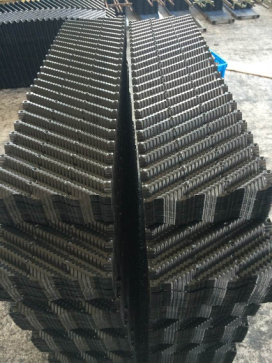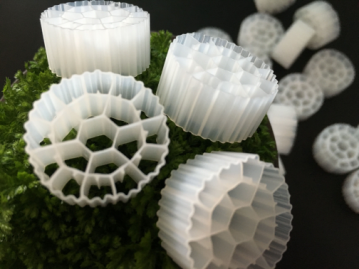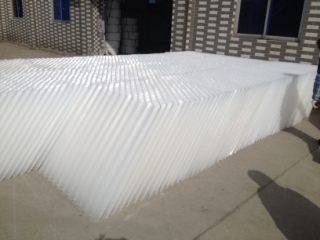Polyvinyl Chloride (PVC)
PVC is extremely chemical-resistant, able to withstand acids, salts, bases, fats, and alcohols. For this reason, it is often used in sewage piping. It is even resistant to some solvents, such as fuel and paint thinners, but some may damage it; therefore, using PVC to drain or hold solvents isn't recommended. PVC can be produced in a variety of colors, but primarily comes in white, dark gray, or blue-ish clear. In addition to the applications listed in the introduction, PVC is used for home siding and gutters, skiing equipment, medical tubing, and much more.
PVC Material made cooling tower fills, VF19mm-LC
Width: 305mm/610mm; Length: as your request; Sheet space: 19mm;
Thickness: 0.28~0.38mm; Application: Counter flow cooling tower

Polyethylene (PE)
PE is the most common type of plastic, with around 80 million tons of it produced every year. It was industrialized in 1939 and is primarily found in packaging, including plastic bags, films, and bottles. Like all plastics, it comes in many different forms and is very versatile. Unline PVC, PE has low strength, hardness, and rigidity. It makes up for that by having high ductility (the ability to be stretched into wire) and impact strength (the ability to withstand a suddenly applied impact). This flexible and malleable material has a slightly higher temperature rating than PVC, softening at 176 degrees. Different density PE will have different melting points. The higher the density, the higher the melting point.
PE material made mbbr media, applid in waste water treatment project.
Size: PE01, 02, 03, 04, 05

Polypropylene (PP)
PP was first created in 1951 and is a polymer that is used for a wide range of applications including ropes, carpets, loudspeakers, automobile bumpers and fenders, laboratory equipment, and stationery. It is known to have a slick, or slippery surface that most common glues will not properly adhere to. Most often, PP is joined together with welding processes. This plastic has low density, the lowest of any of the "commodity plastics." Despite this low density, PP is tough and flexible while remaining an economical choice for manufacturers.
PP material made tube settler, applied in sedimentation pond.
Size: 1m*1m; 1m*1.2m; Assembled height: 0.866m or 1m

For more details about cooling tower fill welcome to contact me at neva@coolingtowerinfill.com